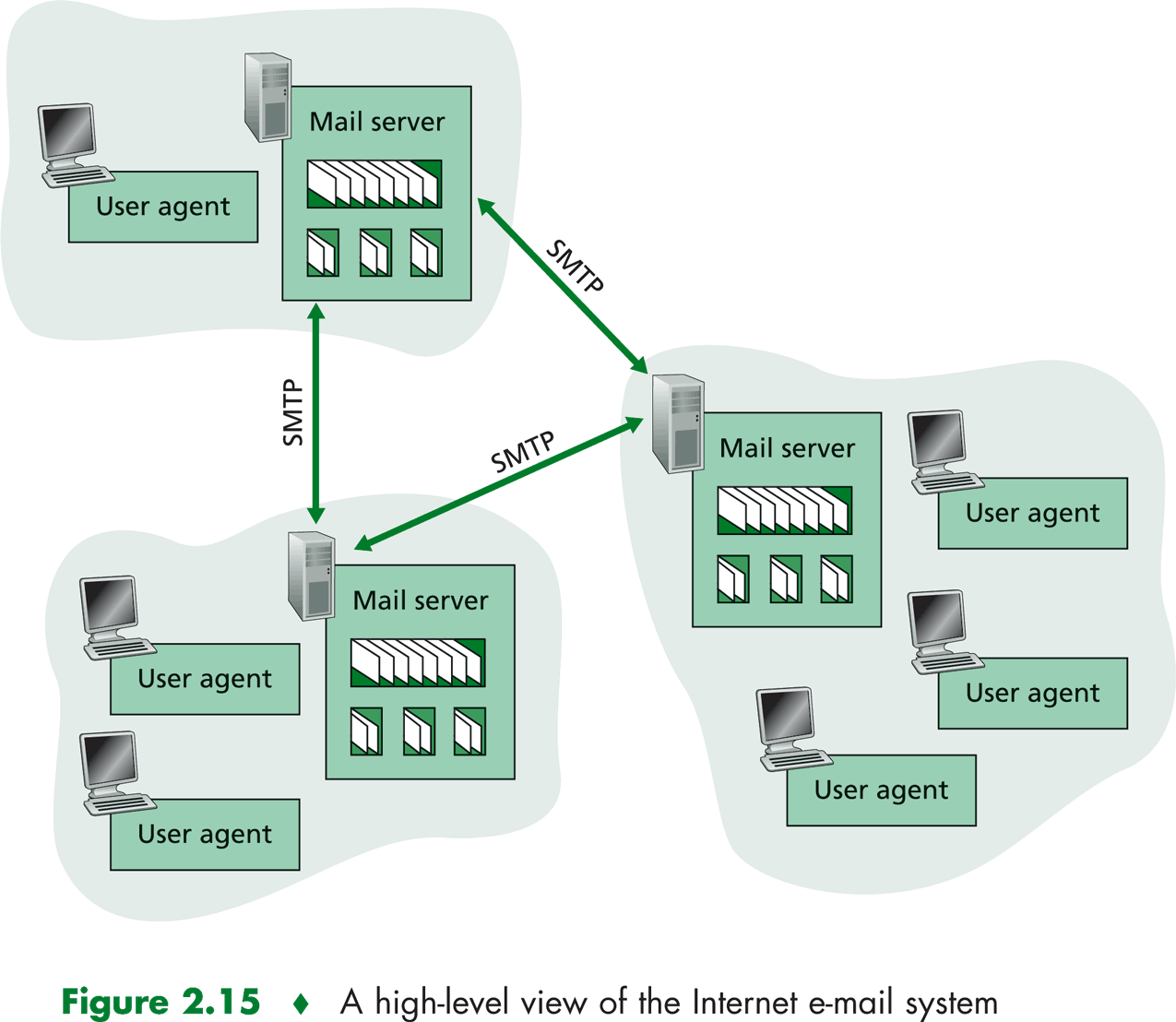|
Electronic mail has been around since the beginning of the Internet. It was the most popular application when the
Internet was in its infancy, it has become more and more elaborate and powerful obver the years, and it continues to evolve.
It is one of the Internet's most important killer applicatons to date.
There are three major componets: user agents, mail servers, and the Simple Mail Transefer Protocol
(SMTP).

Mail servers form the ocre of the e-mail infrastructure. Each recipient has a mailbox located
in one of the mail servers.
Servers hold the message in the message queue and attempts to transfer the message later. Reattempts
are often done every 30 minutes or so; if there is no success after several days, the server removers the message and notifies
the sender with an e-mail message.
SMTP is the principal application-layer protocol for Internet electronic mail. It uses the reliable data transfer
service of TCP to transfer mail from the sender's mail server to the recipient's mail server. As with most application-layer
protocols, SMTP has two sides: a client side, which executes on the sender's mail server, and a server side, which executes
on the recipient's mail server. Both the client and server sides of SMTP run on every mail server. When a mial
server receives mail from the other mail servers it acts as an SMTP server.
|



